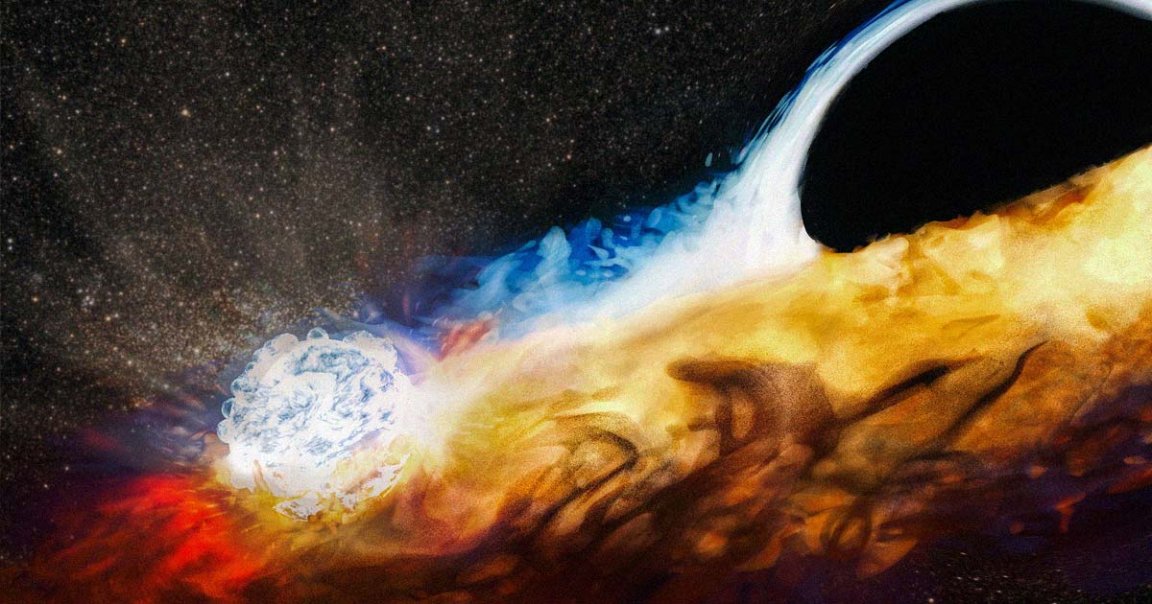
Get Wrecked
New NASA data shows a supermassive black hole going on a chaotic killing spree, destroying one star before pelting another with its dead body. Metal!
The findings, which were published this week in the journal Nature, shed light on a phenomenon known as a tidal disruption event (TDE).
In short, these events are gory celestial instances in which a star gets too close to a black hole and is shredded to pieces by its gravity. The scientists’ research links TDEs to another observed cosmic mystery: quasi-periodic eruptions (QPE), a more recently discovered class of bright X-ray pulses that flash from the centers of galaxies around black holes.
“There had been feverish speculation that these phenomena were connected, and now we’ve discovered the proof that they are,” said study coauthor Dheeraj Pasham, an Einstein fellow at the Massachusetts Institute of Technology, in a statement. “It’s like getting a cosmic two-for-one in terms of solving mysteries.”
Though the cosmic crime itself is nothing short of violent, an illustration created by NASA based on the data collected from various telescopes is a mesmerizing sight to behold.
Diving Class
Using data taken from NASA instruments including the Chandra X-Ray Observatory and the still-kicking Hubble Space Telescope, researchers were able to determine that a TDE called AT2019qiz, discovered back in 2019, left behind a disk of material.
According to the study, that disk continued to expand over the next few years, until it eventually caught up with another object in the supermassive black hole’s orbit. (This object is likely another star, though it’s possibly a smaller black hole.)
Now, every 48 hours or so when the disk material intersects with this second object, a flash of X-ray gas appears — leading scientists to believe that QPEs arise as an eventual result of TDEs, an intriguing link in our still-murky understanding of this violent cosmic chain of events.
It also means that this second cosmic body is probably being mercilessly pummelled to death with the original star’s body as we speak.
Lead study author and Queen’s University, Belfast physicist Matt Nicholl likened the brutal incident to a “diver repeatedly going into a pool and creating a splash every time she enters the water.”
“The star in this comparison is like the diver and the disk is the pool, and each time the star strikes the surface it creates a huge ‘splash’ of gas and X-rays,” Nicholl explained in a statement. “As the star orbits around the black hole, it does this over and over again.”
Violent as the incident is, the new research is a powerful reminder of the awesome power held by supermassive black holes.
More on black holes: Scientists Say Furious Black Hole Making Nearby Stars Explode